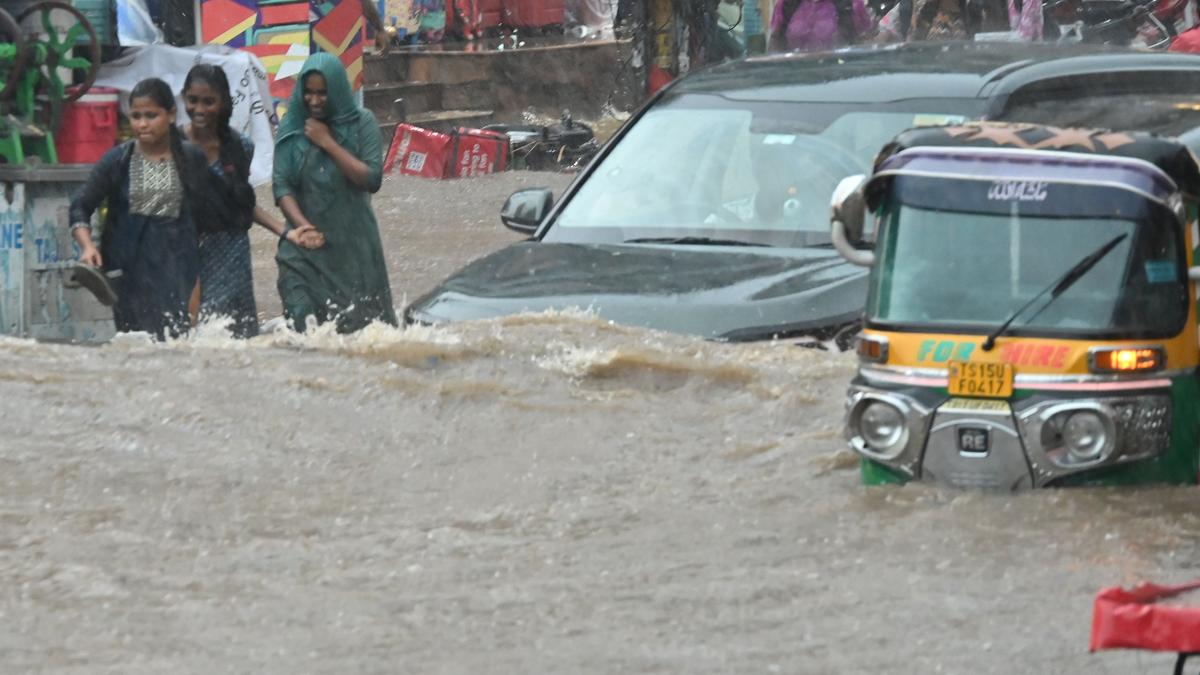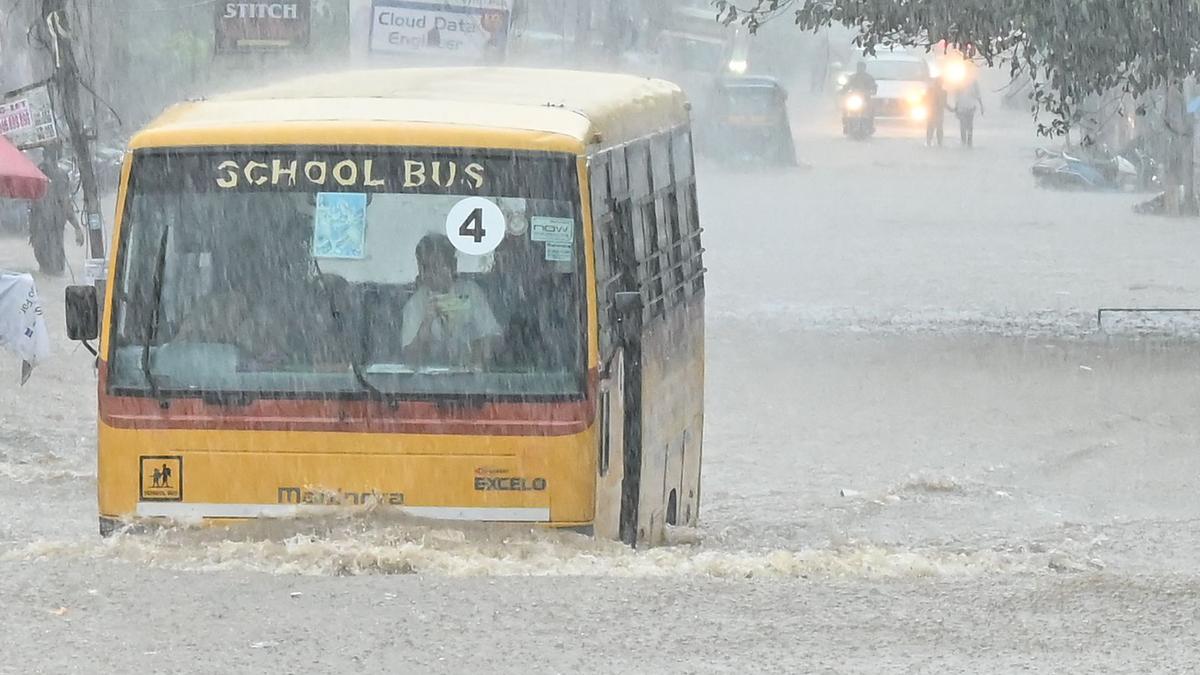Now Reading: Hyderabad Drainage Woes: Collapsed Vents Blamed for Ameerpet Flooding
-
01
Hyderabad Drainage Woes: Collapsed Vents Blamed for Ameerpet Flooding
Hyderabad Drainage Woes: Collapsed Vents Blamed for Ameerpet Flooding

Quick Summary
- Severe flooding occurred on Monday in Hyderabad, particularly between punjagutta and Ameerpet, following intense rainstorms.
- Preliminary inspections suggest the flooding was caused by collapsed or jammed road vents and insufficient drainage systems at Srinivasa Nagar Colony, reducing two 20-foot box drains to a single 15-foot drain.
- Civic authorities are still investigating the cause; officials from Greater Hyderabad Municipal Corporation (GHMC) were unavailable for comment.
- Raj Bhavan Road also experienced extreme inundation despite existing rainwater-holding structures designed to delay floodwater release. These structures proved inadequate under heavy rainfall (up to 15 cm), having been built with a capacity for just 10 lakh litres each.
- Efforts to enhance water-holding infrastructure failed due to high groundwater levels near Hussainsagar lake, preventing injection bore-wells from being installed effectively.
Indian Opinion Analysis
The recent flooding in Hyderabad highlights critical weaknesses in civic infrastructure planning and management. While heavy rainfall is often unpredictable and severe events may test existing systems, the insufficiency of core drainage facilities-such as collapsed vents and inadequately designed rainwater-holding structures-points toward systemic shortcomings. Additionally, GHMC’s inability to meaningfully respond or address these recurring problems raises concerns about preparedness for future climate-induced extreme weather events.
Urban centers like Hyderabad must invest both politically and economically into enduring designs that can accommodate escalating rainfall patterns brought on by changing climates. Collaborative efforts between city planners, engineers, environmental experts, and policymakers could offer long-term solutions through improved capacity-building measures such as robust drainage expansions or choice water diversion frameworks.
For cities aiming at rapid urbanization while coping with dense populations like Hyderabad’s upper regions (Banjara Hills/Jubilee Hills), bolstering resilient infrastructure is increasingly crucial-not just in mitigating immediate consequences but also for ensuring public safety and minimizing economic disruptions caused by such disasters.
Read more: The Hindu – Aug 6
























